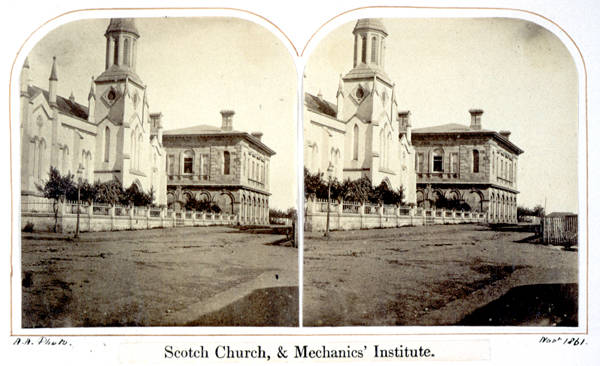 |
 |
|
Mechanics' Institutes
Mechanics' Institutes originated in Edinburgh in 1821 and soon spread to the rest of the British Isles and throughout the world. They sought to give skilled working men education for life and work, providing lectures, classes, libraries and even museums. Australia's first mechanics' institute was established in Hobart Town in 1827. This Van Diemen's Land Mechanics' Institute had a chequered early career, but flourished when the Presbyterian Rev John Lillie became president in 1839, his lectures providing 'the high-water mark of learning publicly disseminated' in the colony. But mechanics stayed away, repelled by the exclusivity and paternalism that pervaded the Institute. Unable to repay its debts and losing support, it folded in 1871. The most successful mechanics' institute was established in Launceston in 1842 with the support of Congregational minister, journalist and historian John West. From private and official sources, £8000 was raised for an institute building, designed by eminent architect WH Clayton. This Italianate edifice remained the centre of culture and an ornament to the town until demolished in 1971. Its books and periodicals became part of the city's public library. Less impressive but still noteworthy were the Franklin, Huon, Don, Waratah, Port Esperance, Ellesmere (later Scottsdale), Emu Bay, Ringarooma and Queenstown mechanics' institutes. The word 'mechanics' did not form part of the name of the Bellerive, Campbell Town, Devon, Glenora, Green Ponds, Hamilton-on-Forth, Lefroy, Oatlands, Sorell, Stanley and Wynyard institutes, but they had similar aims to mechanics' institutes. Related but short-lived societies included the Tasmanian Society for the Diffusion of Useful Knowledge (Launceston, 1831), the Tasmanian Society for the Acquisition of Useful Knowledge (Hobart Town, 1845), and the Mechanics' School of Arts (Hobart Town, 1850). Most mechanics' institutes failed in their educational aims and became congenial places of resort for middle-class patrons, including women. The libraries pandered to their non-demanding tastes, and lectures proved less attractive than musical performances and entertainments of various kinds, such as penny readings. While institute buildings have survived, sometimes as community centres or libraries, the worthy ideals of the founders – self-improvement, self-discipline, class co-operation and cultural egalitarianism – have long been forgotten. Further reading: G Nadel, Australia's colonial culture, Cambridge, 1957; S Petrow, 'The life and death of the Hobart Town Mechanics' Institute 1827–1871', THRAPP 40/1, 1993; S Petrow, Going to the mechanics, Launceston, 1998. Stefan Petrow |
Copyright 2006, Centre for Tasmanian Historical Studies |
